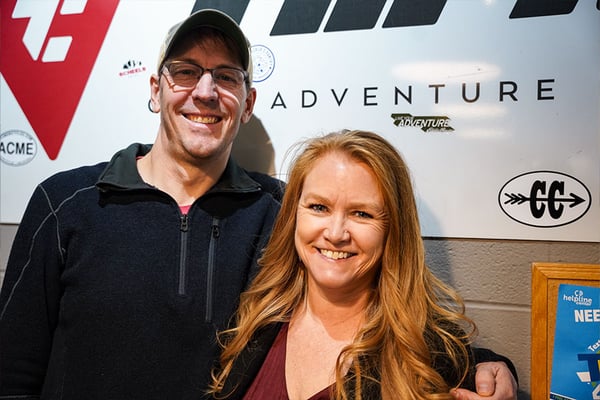On paper, music and STEM aren’t compatible.
The two are polar opposites. Music is pursued for artistic expression, emotional communication, entertainment, cultural preservation, and personal enjoyment. Conversely, STEM deals with the natural world, developing technology, solving real-world problems, advancing scientific knowledge, and promoting innovation. Music involves creativity, expression, interpretation, and performance. STEM involves systematic observation, experimentation, analysis, problem-solving, and theoretical modeling.
With these stark differences, one would think South Dakota Mines would have no music program or, if it did, a very weak one. How can an engineer and a musician be one and the same?
But the Music Department at South Dakota Mines has highlighted time and time again that not only can engineers and scientists be musicians, but they can also be outstanding ones and produce some of the most beautiful music in the Midwest – and has done so for decades.
While unlikely, the marriage between musicians and scientists and engineers is a strong one.
Haley Armstrong, PhD, and Gerrit Scheepers, PhD, have been tasked to lead the next generation of musical engineers at South.jpg?width=351&height=234&name=2024%20Sweetheart%20Dinner%20and%20Dance%20(22).jpg) Dakota Mines. Armstrong’s instruction of the bands and Scheepers’ choral direction have elevated the music program at the university.
Dakota Mines. Armstrong’s instruction of the bands and Scheepers’ choral direction have elevated the music program at the university.
Armstrong, finishing her eighth year at the university, was one of the commanders and conductors in the Air Force Band Program. When she finished serving, she wanted to get back into academia. She saw the position at South Dakota Mines, applied, and immediately fell in love with the school.
“There was just something ridiculously magical about these students, even though they’re non music majors,” she said. “I knew right away this was the right choice.”
Armstrong raised a good point. South Dakota Mines doesn’t offer degrees in music, yet, more and more students are flocking to music than ever before. In fact, roughly 10 percent of undergraduate students at Mines participate in the music program.
Scheepers, who is currently in his second year, saw the posting at South Dakota Mines and applied. He knew that there would be no teaching opportunities, but said he had a unique feeling upon coming on campus and found a very hardworking group of students.
Scheepers cannot speak highly enough about the unique blending of STEM and music. “Studies show music makes you smarter,” Scheepers said. “But they are learning so many skills that have nothing to do with academia or being smart.” From leadership skills to time management, both critical to engineers, students’ learning goes beyond the classroom.
And now, music at South Dakota Mines has entered a new era. In addition to playing instruments, musicians, with the aid of professors and on-campus organizations, have started to craft their own unique instruments to be used in campus-wide productions.
“This is a new, exciting frontier,” Armstrong said. “It might not fit into every project perfectly, but that requires the students to think out the problem to see how the instrument they’re making themselves can be applied to the music they’re performing.”
The musicians at South Dakota Mines will be hitting the road once again, continuing a long tradition at the university, Scheepers said. The university now boasts several instrumental and choral ensembles to ensure that the student body's musical needs are met. The university choir is open to not only students of the university but also faculty, staff, and community members – including alumni.
Both Armstrong and Scheepers tout the strong alumni support the music program at the university receives. From.jpg?width=465&height=310&name=2024%20Sweetheart%20Dinner%20and%20Dance%20(1).jpg) scholarships, words of encouragement, and, yes, even participation in ensembles, both say the department thrives thanks to alumni support.
scholarships, words of encouragement, and, yes, even participation in ensembles, both say the department thrives thanks to alumni support.
Alumni involved in the music department note the strong, nearly fraternal bonds those who experienced the music department share.
Ken Miller (CE75) was a member of the Singing Engineers in his freshman and sophomore years at the university. To this day, Miller still sings with the university choir.
Through his involvement, Miller said he’s seen choral directors come and go, but each one had the same goal: make music the university would be proud of.
And through making beautiful music, a bond formed – one that spans generations. Through numerous concerts – here in South Dakota and nationally – the musical engineers at Mines have forged a connection that rivals – and often surpasses – the bonds formed in organizations such as Greek letter societies.
“I’ve had the pleasure to establish relationships with all these very talented singers, and this includes the younger generations, as well,” Miller said. “We all have a bond that was created through music.”
Toni Richardson (IS95) also felt deep-seated connections form through music at Mines.
She said participants in the music program were good – and they knew they were good.
“We were top-notch,” she said. “It really gave us confidence, and we were able to take that across the rest of campus and help us get through our time at Mines. And it helped us form bonds. Even if we had different majors, we had something in common.”
The university sees music as an asset for recruitment. Potential students visiting campus now have the option of having a tour of the music center. Armstrong said they are getting phone calls and emails from students who cannot wait to get involved in music at the university.
“It’s really cool,” Armstrong said. “The growth, the connections that music forms, it’s amazing.”
.jpg)

.jpg?width=600&height=450&name=Michelle%20and%20Danni%202023%20(003).jpg)
